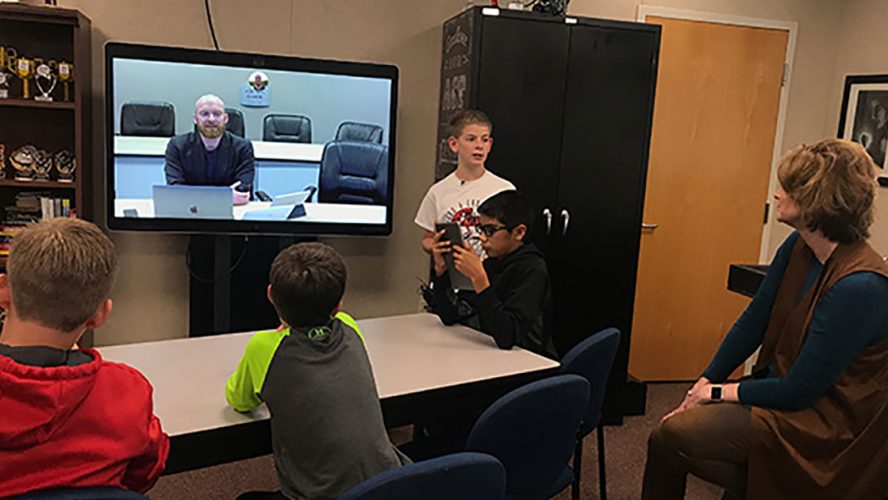Engaging students is often easier said than done. But a new all-in-one device is helping educators engage with students in physical classrooms — and beyond. Schools can also extend instruction and encourage student collaboration — before class even starts and after the end of the school day. It’s called the Cisco Spark Board. Together with the Cisco Spark app, it provides a physical and virtual solution to extend learning beyond the classroom.
“Cisco Spark blurs the lines between synchronous and asynchronous learning to the point where students gain one truly hybrid experience,” explains Dr. Lance Ford, a teacher and technology facilitator/coordinator for Howe Public Schools in rural Howe, Oklahoma and an educational technology advocate for Cisco. “We work together in class on the Cisco Spark Board. We can save any work we create to a virtual space, which students can access at home through the Cisco Spark app. From there, they can collaborate with their classmates or interact with me.”
How it works
The Cisco Spark Board is a single device that combines a wireless presentation screen, a digital whiteboard, and an audio and video conferencing system. Teachers can present lessons wirelessly from a laptop, draw on the whiteboard digitally, and connect with other classrooms or remote experts through audio or video conferencing. Connection with the Cisco Spark app provides continuous learning, allowing students to “take the classroom with them” wherever they are.
“It has completely changed how students learn,” says Carol Ann Ford, Gifted and Talented Coordinator, Howe Public Schools. “They are motivated to learn about things they’re really interested in. So rather than me being the teacher in front the room, I’m more of a facilitator now. It’s a guided process where they’re learning to solve real-world problems. They can structure their learning at a time that’s best for them.”
Cisco Spark and Cisco Spark Board are enabled by the Cisco Digital Education Platform, which is comprised of a secure core network and state-of-the art wireless capabilities. The platform is a digital environment that supports virtual classrooms, mobile learning and a greater sense of safety and security, among other features.
Equal opportunities
Ms. Ford appreciates how the Cisco Spark Board has leveled the playing field. “Especially for our students in a small school in southeast Oklahoma, access to the materials that bigger schools have is now available to them,” she says. “It has broken down the walls of social class and geographical boundaries.”
Advanced technology allows students to travel the globe without leaving the classroom.
“I use video conferencing for virtual field trips,” Ms. Ford explains. “Instead of loading up a class of students to go to a museum, I can actually connect with a lot of museums around the world.”
No limits
Ms. Ford says using the Cisco Spark Board makes her a better instructor.
“I started teaching 25 years ago, with a chalkboard, a white board, and an overhead projector,” she says. “For me, Cisco Spark Board has revolutionized the way I do things. Being able to connect with other teachers, to know I’m not limited to the books I have in my room or the people I can talk to here in this local area — it opens up the world to a teacher.
“It enhances everything I do in the classroom. It’s not just me telling students what I think they need to know.”
No longer isolated
Dr. Ford says being part of a global experience is invaluable. “At a rural district like this, we don’t have the opportunities to have as many instructors as we would like, and certainly not as many specialized instructors,” he explains. “But we don’t want our students to be at a disadvantage upon graduation. Bringing in specialized classes means that video will be the medium to do that.”
Igniting the future
As for what lies ahead for students, Dr. Ford is optimistic: “We have a lot of technology, a lot of great wireless here, and a lot of opportunities for learners. But this ability to build relationships beyond the scope of these four walls … this is what’s going to set our students apart as they move from their high school into their college and work careers.
“Our students hone their ability to collaborate with their classmates and others in and out of the classroom in a way they never have before … to be able to nurture great ideas and brilliant thinking at the point that it occurs, and not to have to wait for the next class,” he adds. “That’s how innovation happens. That’s the way of the future.”
Cindy Riley, [email protected]


